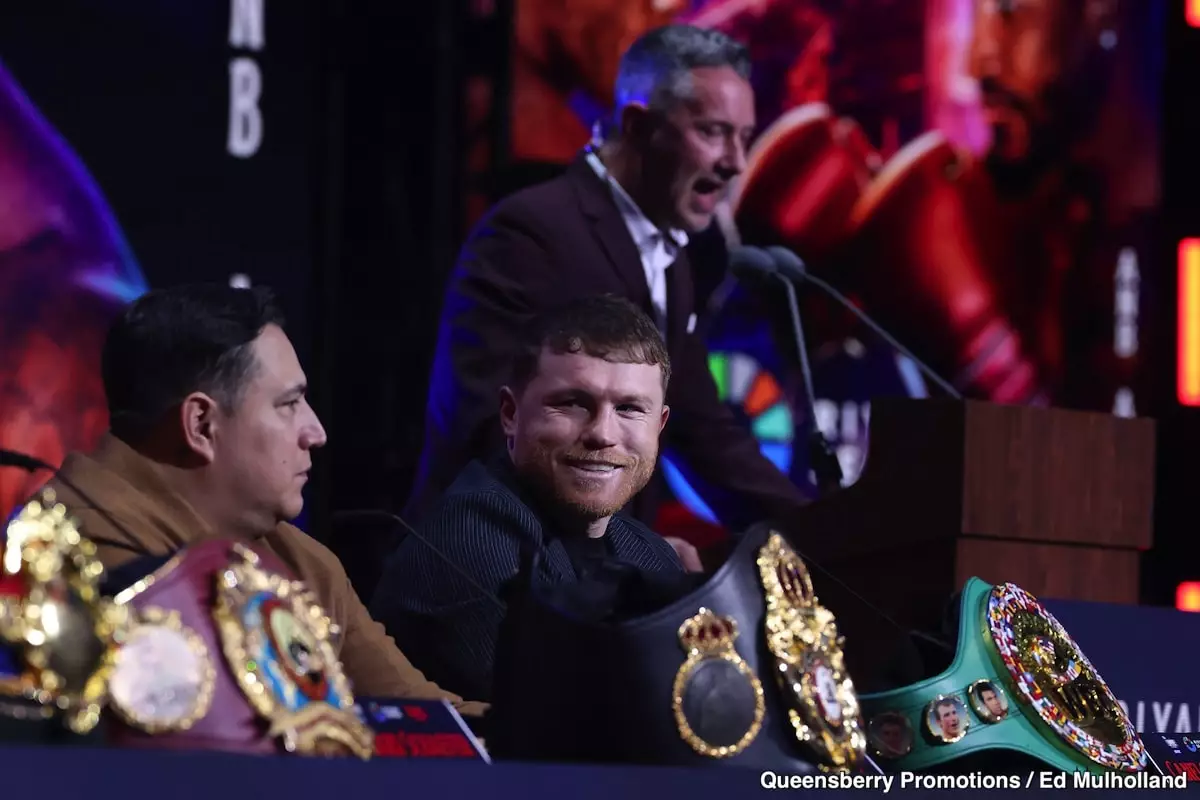Canelo Alvarez, at 34 years of age, stands as a towering figure in the world of boxing, often proclaiming himself as the “Face of Boxing.” Unquestionably, he has cemented his place in the sport’s history through a combination of grit, skill, and an ever-expanding fanbase. Yet, as newer and bolder fighters emerge, many question the longevity of Alvarez’s reign. This phenomenon transcends mere statistics and delves into the essence of competition: the drive to take risks and consistently engage with formidable opponents.
Despite Alvarez’s financial dominance—boasting the title of the leading money-maker in North America—there is an underlying tension concerning the perception of his competitive edge. Legendary matches against elite fighters like Gennadiy Golovkin and Floyd Mayweather Jr. set a benchmark that Alvarez has struggled to replicate in recent bouts. Critics argue that the recent decline in competition, including a lackluster upcoming fight with William Scull, suggests he might be prioritizing financial gain over legacy-building contests. The introduction of a bundled pay-per-view event featuring Ryan Garcia only adds a layer of complexity, illustrating a strategic pivot rather than a pure commitment to seeking out challenging bouts.
Navigating Through Decreasing Competition
While Alvarez maintains the claim of being the sport’s face, what does it truly mean in an era rife with emerging talent? The question arises: can one genuinely be deemed the best when opting to sidestep matchups against rising stars such as David Benavidez or Dmitry Bivol? Within the vibrant landscape of boxing, the art of competition is steeped in courage—taking risks to fight tough adversaries elevates a fighter’s stature. By moving away from essential challenges, Alvarez risks causing a split between his public persona and the critiques of passionate boxing enthusiasts.
Canelo himself acknowledges the growing crop of capable fighters, implying a blend of respect and caution, but this recognition begs further introspection. If the essence of boxing is to elevate oneself through confrontations with the top talent of contemporaneous eras, can he still rightfully wear the crown while seemingly opting for safer paths? It requires courage to admit that not all battles are worth fighting; however, the absence of challenging fights may lead fans to feel alienated from the very essence that makes boxing thrilling.
The Fight Fans Deserve
The boxing community yearns for bouts that excite, inspire, and captivate them to the core. The anticipation surrounding a potential clash between Alvarez and Terence Crawford has been palpable—a matchup that poses a genuine risk for Canelo. Unlike his less daunting upcoming fight, this matchup offers both fighters an opportunity to solidify their places in history. The build-up is rife with fervor, and fans crave the exhilaration sparked by clashes of titans.
However, merely beating Crawford might not suffice in restoring Alvarez’s unchallenged status in the sport. To secure his legacy, he must confront and conquer other elite fighters of his time, showcasing not only his technical prowess but his will to chase greatness. The frustration surrounding his apparent reluctance to trade blows with rising stars warrants scrutiny, as fans are left grappling with the notion that their champion may be gliding towards retirement—letting glory slip through his fingers by forgoing competition.
A Champion’s Legacy Through Mentorship
With his desire to be a role model and mentor, Alvarez espouses the value of loyalty and stability within his training environment, notably expressing appreciation for his long-time coach, Eddy Reynoso. However, the balance between mentorship and personal ambition remains delicate. While aiding younger fighters such as Jaime Munguia is commendable, the question remains: is Canelo directing too much of his energy toward helping others rather than increasingly challenging himself?
He often conveys his desire to uplift fellow Mexican fighters, which is admirable. Nevertheless, at what cost does this approach come? If he continues on what many deem a “retirement tour,” will he inadvertently diminish his own legacy? Mentorship and personal success need not be mutually exclusive; a commitment to excellence in one’s own career can serve as the most potent form of inspiration in the boxing world.
While Canelo Alvarez continues to carry weight as a financial powerhouse, the dialogue surrounding his legacy must include a nuanced perspective. The paths he chooses henceforth will dictate whether he remains the enduring “Face of Boxing” or finds himself relegated to the annals of a once-great champion. The sport’s enthusiasts await his next moves with bated breath, hoping for a revival of the Canelo who fought ferociously against the best, characterized by risk and valor.

